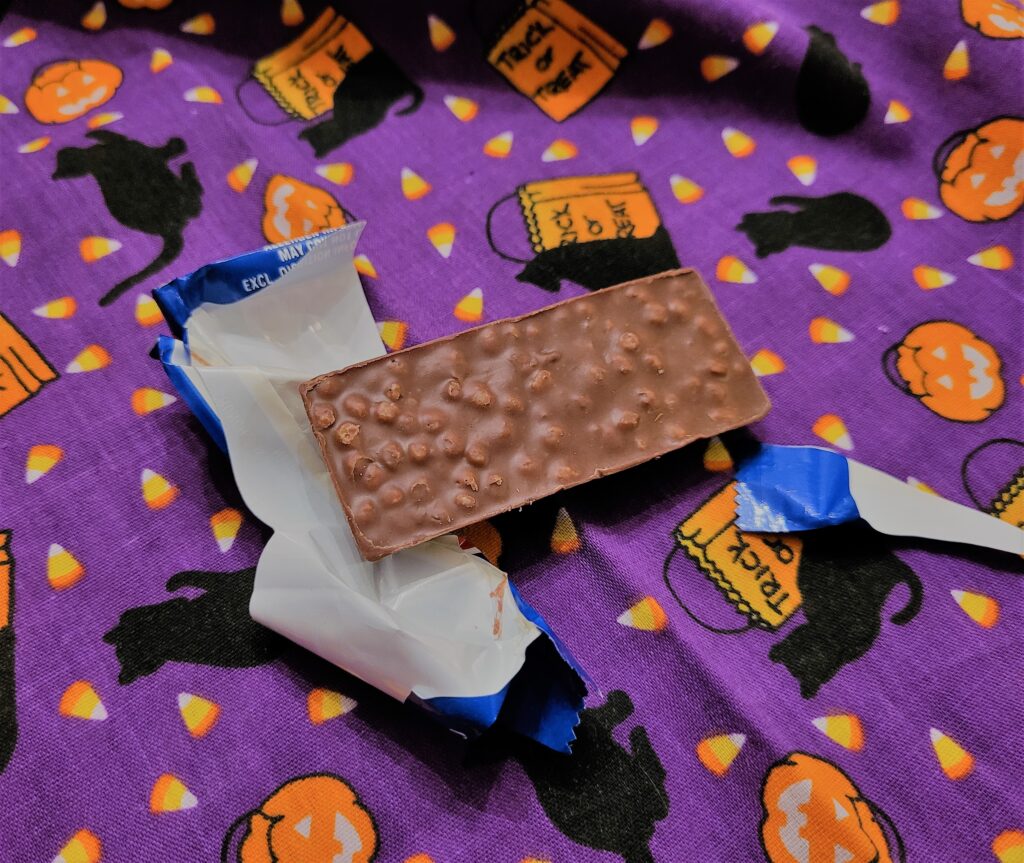In only a few days our streets will be filled with trick-or-treaters, so I thought it would be a good time to blog about our Halloween Candy Footprint.
I have wonderful memories of hosting children’s Halloween parties. Sometimes the kids would team up for a toilet paper wrap mummy competition. So the game went, one person would be the mummy and the other would wrap them up. We also had pin the nose on the ghost game. One of our early entertainments was the “Boo Puppet Theater”. The stage was a large recycled cardboard box and the puppets were pumpkins made of orange felt. That only worked for bit as a certain someone would take all the props and the “actors” during the play.
In our home, we held a Halloween party every year with lots of candy and, of course, there was also trick-or-treating candy.
Consider the Halloween Candy Footprint
So, now it comes to the point for us to evaluate our consumption of candy. Thinking about our Halloween Candy Footprint requires us to talk about environmental and social impact.
Online research reveals Halloween chocolate candy is made with cocoa and palm oil. Tropical areas that grow palm oil are seeing deforestation and land use change. This leaves the area with climate and biodiversity issues.
To produce chocolate, farmers sometimes use their own children as farm labor since they cannot afford to hire outside help. Each farm is different.
Today chocolate companies want transparency in the production of chocolate and palm oil. They want to known about child labor, living income, deforestation, and other issues.
Reducing Palm Oil Use
An interesting fact, is some major candy companies have reformulated their candy recipes to use less palm oil.
Using less palm oil is good for the rainforests and the environment. This is because rainforests are removed to make way to grow more palm oil trees.

Plastic Wrapped Candy
Another thing we need to consider, is recycling and reducing the amount of waste. Individually wrapped Halloween candy often creates a lot of waste. Most plastic candy wrappers are not recyclable.
Mars, in association with Rubicon Technologies, is now offering a trick-or-treat bag with prepaid postage and instructions on how to return the wrappers for recycling.
But there are also some candy choices sold in recyclable box containers.
Also, please don’t toss out any leftover Halloween candy you don’t want as it often can be donated to homeless shelters or other places.
Ending Notes on Halloween Candy Footprint
Right now, candy companies are faced with a lot of real social and ecological issues in the production of their product.
That being said, enjoy your Halloween and your trick-or-treat candy but, also, think about your choices.
Happy Halloween!
Resource Sites: The Washington Post, “Halloween Candy Choices for the Socially Conscious” by Allyson Chiu, Oct. 26, 2022 and www.mars.com

